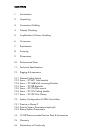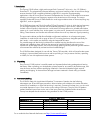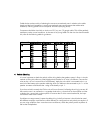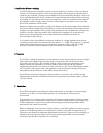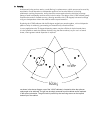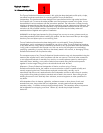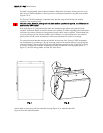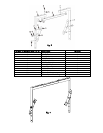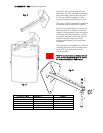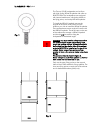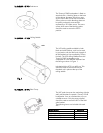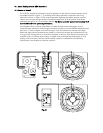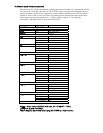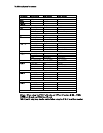5. Amplification & Power Handling
As with all professional loudspeaker systems, the power handling is a function of voice coil thermal
capacity. Care should be taken to avoid running the amplifier into clip (clipping is the end result of
overdriving any amplifier). Damage to the loudspeaker will be sustained if the amplifier is driven into
clip for any extended period of time. Headroom of at least 3dB should be allowed. When evaluating
an amplifier, it is important to take into account its behaviour under low impedance load conditions.
A loudspeaker system is highly reactive and with transient signals it can require more current than
the nominal impedance would indicate.
Generally a higher power amplifier running free of distortion will do less damage to the loudspeaker
than a lower power amplifier continually clipping. It is also worth remembering that a high powered
amplifier running at less than 90% of output power generally sounds a lot better than a lower power
amplifier running at 100%. An amplifier with insufficient drive capability will not allow the full
performance or the loudspeaker to be realised. (See technical specifications section for
recommended amplifier power)
It is important when using different manufacturers amplifiers in a single installation that the have
very closely matched gains, the variation should be less than +/- 0.5dB. This precaution is important
to the overall system balance when only a single active crossover is being used with multiple
cabinets; it is therefore recommended that the same amplifiers be used throughout.
6. Crossovers
The V12HP is supplied as standard for passive operation via the internal crossover network. If higher
peak outputs and additional low frequency output is required then the V12HP can be used in
conjunction with the Tannoy TX2 controller/crossover which provides high pass filtering and a
degree of parametric equalisation, as well as a fixed crossover point for use with sub-bass
loudspeakers (See the TX2 user manual for further information). The Tannoy TDX2 Digital controller
will also perform the above functions with additional control and features including limiting and
delay (See the relevant literature on the TDX2 for further information).
The V12HP can be easily configured for Biamp operation in conjunction with the TDX2 or other
OEM controller/crossovers. A detailed description along with system parameters is given in Section
13 of this manual.
7. Equalisation
The V12HP loudspeakers are designed to need no equalisation or correction to overcome system
limitations. As a result, it will only need equalisation to compensate for difficult acoustic
environments.
Over equalisation can reduce system headroom, and introduce phase distortion resulting in greater
problems than cures. If equalisation is required then it should be applied gently and smoothly. The
V12HP loudspeaker is a point source, phase coherent designs and violent equalisation will be
detrimental to the overall sound quality.
When a loudspeaker is used in close proximity to another, comb filtering effects can create coverage
problems, comb filtering creates an uneven frequency response across the coverage area due to
constructive and destructive interference effects between the sources. The amount of comb filtering is
affected by the spacing of the relative sound sources. Minimising this effect cannot be cured by
equalisation (see the following section for more details).





